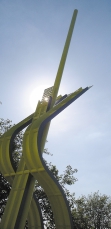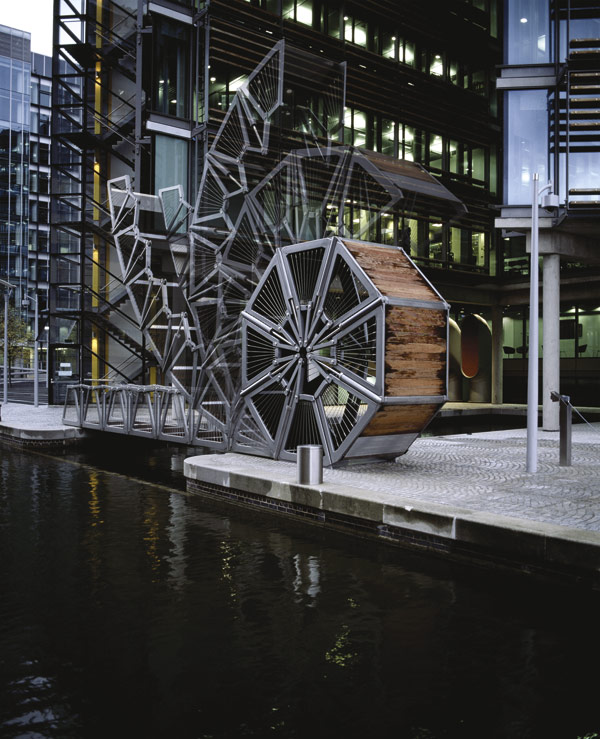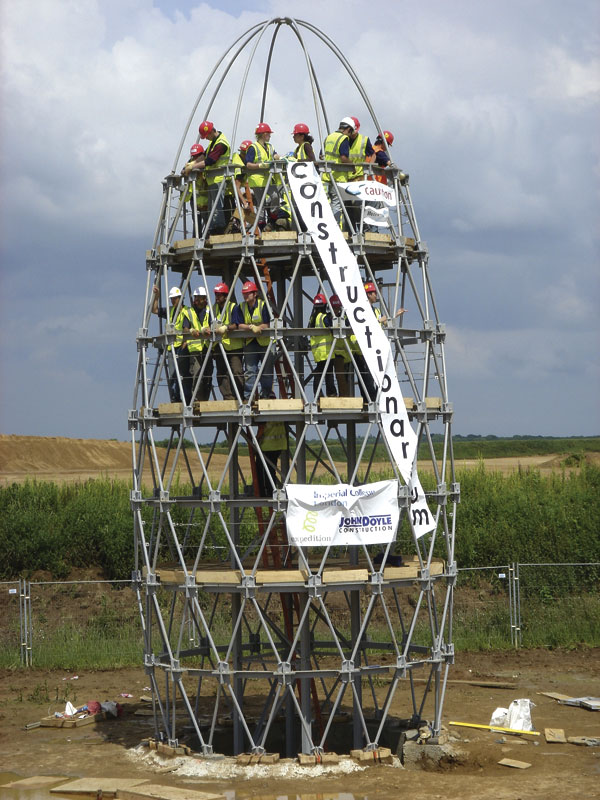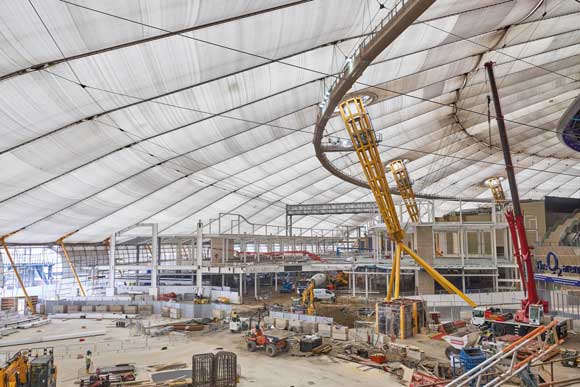Projects and Features
Royal Air Force Museum Hendon: “Skydance” Canopy Sculpture
The Royal Air Force Museum at Hendon, North London, has just built a new museum to house and display its large collection of military aircraft. The building, a giant silver tunnel-shaped hangar, has a striking 25 metre tall steel entrance canopy, designed by the Japanese sculptor, Kisa Kawakami.
Client RAF Museum HendonArchitect Fielden Clegg Bradley
Architects Sculptor Kisa Kawakami
Engineer Buro Happold
Steelwork Contractor SH Structures
THE canopy touches the ground to provide benches for passers by, then rises to provide shelter at the entrance to the building. Sculptor Kisa Kawakami worked with structural engineers Buro Happold and architects Fielden Clegg Bradley to transform his original 25cm high paper model into reality.
 STRUCTURE
STRUCTURE
The sculpture is one of the biggest pieces of permanent artwork in Britain, consisting of 20 tonnes of plate steel ribbons supported by a central cantilever post. Kisa quickly realised when making his model that a central post would be required to support the ribbons. Buro Happold has designed this post to be significantly stiffer than the ribbons, attracting the majority of the wind load and allowing the individual ribbons to be light. The use of a cylindrical section means that any torsion arising from wind loads can be carried directly down to the ground, where 48 mm diameter bolts take loads to the piled foundation. A goalpost frame at the entrance to the building gives additional lateral stability.
The five ribbons, each nearly a metre wide, are made of 12mm thick plate with three web stiffeners forming an “E” shape to give them strength whilst maintaining a lightweight, open section. Each stiffener was cut to the specific curve of the ribbon, providing a profile onto which the curved backing plate could be welded. Sliding joints at key locations prevent the ribbons from acting as props to the cantilever, which would result in them buckling under high winds.
WIND EFFECTS
Low frequency vibrations, caused by vortex shedding from the central post, could potentially have been a problem for this structure, and a dynamic analysis was carried out to check these effects. In fact, the windspeed for vortex shedding that coincides with the natural frequency of the sculpture was found to be very low. The deflections induced at this windspeed are insignificant, and hence no mitigation measures were required.
 CONSTRUCTION
CONSTRUCTION
SH Structures Ltd was the steelwork contractor for the building, and it fabricated the entire sculpture off-site at its factory in Yorkshire. The sculpture was erected there to check for any imperfections, and then transported to London in sections and reassembled on the concrete pad foundations. There was little room for tolerance, with 18 bolts already cast into the pilecap at the main support, and no over-sizing of holes. The use of a casting template sheet, produced by SHS to the exact dimensions of the main baseplate, meant that bolts had been perfectly positioned and the main cantilever could be lifted directly into place. The joints between sections were then site welded and ground flush to achieve the same smooth finish as for the rest of the sculpture.
The distinctive yellow and grey colours of the sculpture can be seen from the motorway that passes behind the museum. This high profile entrance should attract more visitors to the astounding display of aircraft hung from the roof of the new building, an engineering feat worth an article in itself.
Rachel Battilana, a Structural Engineer at Buro Happold













